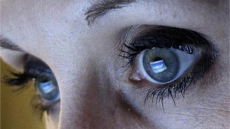TORONTO — Sitting on one's butt for a major part of the day may be deadly in the long run — even with a regimen of daily exercise, researchers say.
In an analysis that pooled data from 41 international studies, Toronto researchers found the amount of time a person sits during the day is associated with a higher risk of heart disease, diabetes, cancer and death, regardless of regular exercise.
"More than one half of an average person's day is spent being sedentary — sitting, watching television or working at a computer," said Dr. David Alter, a senior scientist at the Toronto Rehabilitation Institute, who helmed the analysis.
"Our study finds that despite the health-enhancing benefits of physical activity, this alone may not be enough to reduce the risk for disease."
The paper, published Monday in the Annals of Internal Medicine, found that prolonged sedentary behaviour was associated with a 15 to 20 per cent higher risk of death from any cause; a 15 to 20 per cent higher risk of heart disease, death from heart disease, cancer, death from cancer; and as much as a 90 per cent increased risk of developing diabetes, said Alter.
And that was after adjusting for the effects of regular exercise.
"Avoiding sedentary time and getting regular exercise are both important for improving your health and survival," said Alter. But engaging in 30 to 60 minutes of moderate to vigorous daily exercise does not mean it's OK to then "sit on your rear" for the rest of the day.
The paper's authors can't say how much sitting time is too much — more research is needed to understand what represents a healthy balance between being sedentary and engaging in physical activity.
Not surprisingly, however, they found that negative health effects from prolonged sitting are even more pronounced among those who do little or no exercise.
Alter, a cardiologist, said public health messaging has long focused on encouraging Canadians to get daily exercise to promote good health — working out to strengthen the heart and circulatory system and to help prevent various cancers, including breast and colon cancer.
"We need to get sedentary behaviour on our radar and start talking about that, not just exercise," Alter said.
In his practice, he encourages patients to stand for periods of time each day, because being fully upright burns twice as many calories as does sitting. It also helps to strengthen bones and muscles through weight-bearing gravity.
Couch potatoes could try getting up during TV commercials, or perhaps watch the last 15 minutes of a hockey game standing.
He also recommends that patients get up and walk around for a few minutes every half-hour during their waking hours.
"The bottom line is what we're really trying to do is train people to be aware of getting up and getting walking. And once they're on the track of 'I've got to get up, I've got to move around,' the rest does follow. People take stairs as opposed to taking elevators," Alter said.
"It's about breaking the mould of our culture, which has had us going from hunters and gatherers to sitting all the time."
Dr. Mark Tremblay, director of Healthy Active Living and Obesity Research at the Children's Hospital of Eastern Ontario, said the findings are consistent with a growing understanding that sedentary behaviour is a separate and distinct risk factor for major chronic diseases like heart disease and premature death.
But the relationship with physical activity needs to be figured out with further research, said Tremblay, who was not involved in this study.
"What is it in the interaction between those two, and perhaps other things like sleep? Increasingly, we're understanding that the influence on our health is going to be dictated by the combination of behaviours," he said.
"So if you're someone who gets up and goes for your 30-minute jog religiously each day and then sits at your computer, the impact that that's going to have on any particular health measure — mental health, physical health, bone density, blood pressure, whatever — may be different if you sit less. But it also may be different if you had a good night's sleep the night before, or if you didn't.
"So the total spectrum of movement within the 24-hour period is critical."
In an accompanying editorial, Brigid Lynch of Cancer Council Victoria and Neville Owen of the Baker IDI Heart and Diabetes Institute in Melbourne, Australia, say the study's implications are far-reaching.
However, given the variety of methods used to measure sedentary behaviour in the 41 studies — some used self-reported TV viewing time, others occupational sitting time, for instance — the overall analysis does "not allow precise identification of the duration of sedentary behaviour that puts persons at risk for chronic disease," they write.
"Understanding the mechanisms by which sedentary behaviour increases risk for disease and the precise amounts of sitting that generate risk may enable us to more effectively characterize the most at-risk groups within the population," say the authors, who call for a more consistent approach in performing the research.
In order to say healthy, people need to eat well, move well and sleep well, stressed Tremblay, who is heading a group developing Canadian guidelines for activity levels over a 24-hour period, which should be released by late spring 2016.
"This paper shows in a very robust fashion that you can be active and that in and of itself is not going to protect you from ignoring the other part of the day," he said of the Toronto study.
"So in other words, it doesn't give you licence to sort of sit the rest of the day because you've checked the physical activity box and that somehow is your insurance pill to keep you healthy."





